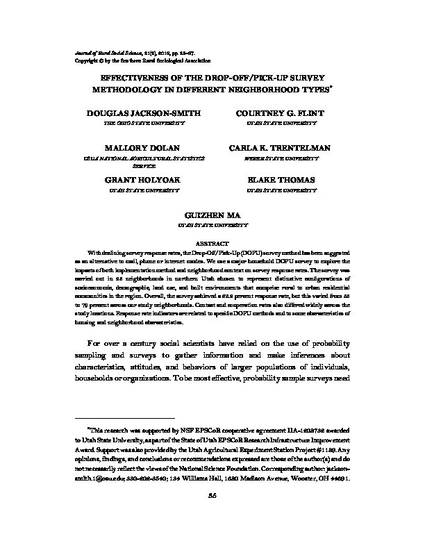
With declining survey response rates, the Drop-Off/Pick-Up (DOPU) survey method has been suggested as an alternative to mail, phone, or internet modes. We use a major household DOPU survey to explore the impacts of both implementation method and neighborhood context on survey response rates. The survey was carried out in 23 neighborhoods in northern Utah chosen to represent distinctive configurations of socioeconomic, demographic, land use, and built environments that comprise rural to urban residential communities in the region. Overall, the survey achieved a 63.2 percent response rate, but this varied from 33 to 79 percent across our study neighborhoods. Contact and cooperation rates also differed widely across the study locations. Response rate indicators are related to specific DOPU methods and to some characteristics of housing and neighborhood characteristics.
Available at: http://works.bepress.com/courtney_flint/138/
